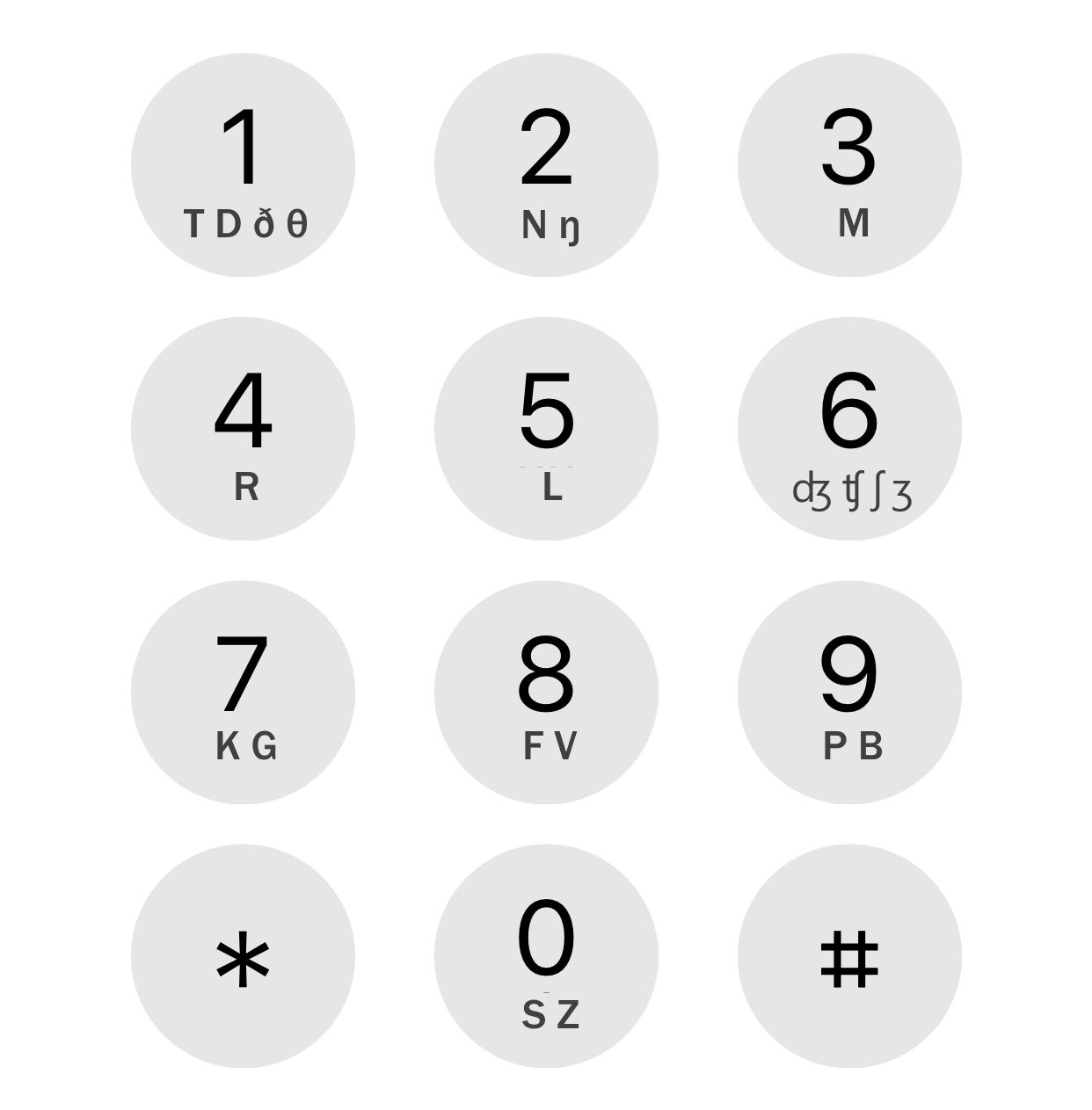The latest episode of The History of English Podcast discusses the history of pronunciation changes in the Elizabethan period. The episode has a lot to say about the connections between voiced and unvoiced pairs of consonants, and the circumstances under which a consonant might change from voiced to unvoiced and vice versa.
The major mnemonic system encodes digits as consonant sounds in order to make words out of numbers. The system works in terms of sounds, not spellings, and so some of the symbols below are not English letters but rather IPA symbols [1]. More on the system here.

If you’re not familiar with the concept of voiced and unvoiced vocal sounds it may seem arbitrary that, for example, the F and V sounds both decode to 8, or that the S and SH sounds map to different numbers, 0 and 6 respectively.
The allocation of sounds may seem inefficient at first.Some numbers get more sounds than others because some sounds belong to clusters of related sounds and some do not. For example, there’s no such thing as an unvoiced L sound, so 5 gets L and no other sound. But 8 gets P and B because these are unvoiced and voiced variations of the same sound.
The allocation is more uniform than it seems at first when you count consonant groups rather than individual consonant sounds.
Related
- All English vowel sounds in one sentence
- How fast were dead languages spoken?
- Writing down an unwritten language
[1] Here are the IPA symbols above that do not correspond to English letters.
|-----+---------| | IPA | Example | |-----+---------| | ð | THis | | θ | THistle | | ŋ | siNG | | ʤ | Jar | | ʧ | CHurCH | | ʃ | SHoe | | ʒ | corsaGe | |-----+---------|
For more on IPA, see the Wikipedia IPA help page.

But that isn’t true. 1 gets two consonant groups; if /t/, /d/, /θ/ and /ð/ form a single group, then so do /p/, /b/, /f/, and /v/, but those are split across 8 and 9. (/t/ and /θ/ do not even share a place of articulation; the fricative articulated at the same place as /t/ is /s/).
English speakers often do have trouble distinguishing /ʒ/ from /dʒ/, but they never have any trouble distinguishing /ʃ/ from /tʃ/, so we can say that 6 is representing two consonant groups too.
2 is also doing double duty; there is no theoretical reason to combine /n/ and /ŋ/, particularly if you’re separating /m/. For consistency, you would either combine all three nasals (considering them as being fundamentally “nasals”) or you’d include them with their matching nonnasal stops, putting /n/ with /d/, /m/ with /b/, and /ŋ/ with /g/.
What I should have said was that the allocation is more uniform when viewed in terms of groups. The digit 1 gets twice as many groups as the digit 5, but four times as many sounds.